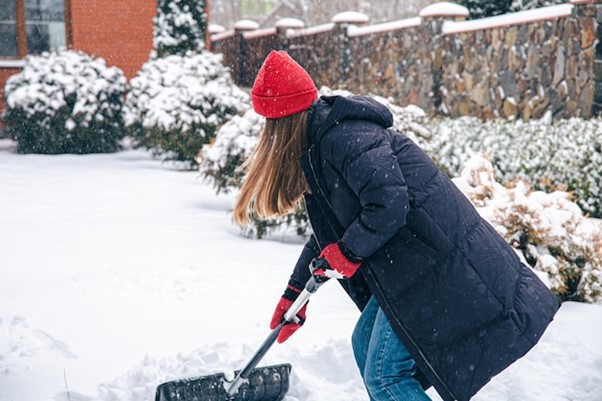Blogs: Tips for safe winter cycling

As cycling gains popularity as a mode of transportation to get from one place to another, some cyclists take it a step further and use their bicycle all year round, even when there’s snow on the ground.
While people are less likely to brave the cold and bike to their destinations during the winter, many cities are improving their biking infrastructure, which could encourage more people to try it. Surprisingly enough, your body stays fairly warm while you’re riding outside since you’re exercising. One issue you’re dealing with is how to stay cool since if you start sweating, then you’ll be chilly with the cold wind blowing while you ride.
Winter Cycling
For any cyclist that’s interested in biking during the winter, there are a number of steps you should take to prepare yourself and your bicycle for the winter weather:
Clothing and Accessories
Wear clothing and gear that is warm and will protect you from the cold and getting wet.
First, you need to wear the proper gear. For starters, ensure that you can see clearly while you’re riding. If you wear glasses, you can buy prescription cycling glasses or anti-fogging spray.
It’s also important to cover any skin that might show, which includes your hands, face and neck. Wear a proper warm and waterproof pair of gloves so you can focus on maintaining your bike’s steering instead of worrying about losing feeling in your fingers.
A balaclava or a scarf are great ways to keep your face and neck warm and there are also helmet liners that fit inside your helmet and keep your ears toasty. Wear waterproof and breathable jackets and pants to help you stay dry.
If you are cycling at night, it’s important that you’re wearing bright or reflective clothing, especially during low-visibility driving conditions.
Winter Bicycle
Meanwhile, just like cars need to be fitted for the winter, the same concept applies to bicycles. It’s suggested that you ride on a more inexpensive beater bike since the salt on the city’s streets can cause rust to its structure. Regularly clean and lubricate your chain and protect it from the elements by covering it up when it’s parked. Also, always wipe down your bike after you ride and check your bike’s brakes since that will help protect you from an accident.
It’s recommended that your lower your bicycle tires pressure to increase traction and there are different types of tires you can choose from depending on the conditions you’re travelling in.
- Thick-tread mountain bike tires will have more traction and grip when you’re travelling across packed snow.
- Thin tires are better for cyclists travelling through slush and wet snow.
- Studded tires can help you ride through ice.
Full fenders on bicycles are also recommended since it keeps the slushy snow and dirt from getting on your clothes.
City Cycling Tips
Just like vehicle drivers, cyclists need to bike more carefully during the winter, especially when there’s snow on the ground. If you don’t mind riding when there’s snow, you should keep in mind that motor vehicles aren’t able to stop as quickly. But the City of Toronto doesn’t recommend cycling when the road conditions are icy. Make sure you give yourself extra time to reach your destination, especially if there’s snow on the ground, and ride slower.
If you’re riding in downtown Toronto, be careful of the streetcar tracks. The tracks can become extremely slippery, even when the streets aren’t, and it’s better to climb off your bike and use the crosswalks when crossing over them. You’ll likely need to ride on the main roads since smaller roads aren’t plowed as quickly and if you do, make sure you have enough space to ride and that you aren’t extremely close to the curb or a driver might not see you. Also, add more reflector and lights so drivers are more likely to see you. Meanwhile, if the weather isn’t great, sometimes it’s safer not to ride your bicycle outdoors.
For drivers, it’s important to slow down during the winter and while visibility may be low, make sure to be aware of your surroundings, including possible cyclists. Also, make sure you check before opening your car door and possibly dooring a cyclist.
If you are involved in a bicycle accident, reverse onus applies. The personal injury and accident lawyers at Neinstein Personal Injury Lawyers have been handling personal injury claims for clients throughout Ontario for more than 50 years. We know how to get you the compensation you need. Call us at 416-920-4242 to set up a free consultation. Come chat with us!
Category Selector
Select a category relevant to you.
- Social Host Liability
- Tort
- Spinal Injury
- Road Safety
- Slip and Fall Claims
- Snowmobile Accident
- Product Liability
- Rail Accidents
- Recalls
- News
- Nursing Home Negligence
- Personal Injury
- Physical and Psychological Injuries
- Negligent Supervision
- Neinstein in the Community
- Medical Malpractice
- Motorcycle Accidents
- Long Term Disability
- Chronic Pain
- COVID-19
- Dog Bites Claims
- Events
- General
- Homeowner Liability
- JUUL & Vaping
- JUUL Vaping Lawsuit
- Lawyer Profile
- Legal News
- Legal Representation
- Liability
- Long-term Care
- Blogs
- Boating Accident
- Brain Injury
- Car Accident
- Accident Benefits Claims
- Auto Insurance
- Bicycle Accidents
- Water Accidents
- Wrongful Death
- In the Community
Area of Expertise
Cycling acident injury
Accidents can happen. And when they do, an experienced bike accident lawyer from our firm will be there to help. We help cyclists get bicycle accident. We help cyclists get bicycle accident compensation for a variety of accidents and injuries resulting from dooring, direct contact, and collision with cars, and poor or faulty infrastructure such as potholes. Our team of experienced lawyers will take the time to gather all relevant evidence pertaining to your case. We will detail the facts surrounding your bicycle accident and the lawyers and investigators assigned to your case will gather any eyewitness accounts when we develop a strategy for your case.
More Posts Legal SupportBook A Free Consultation
We will not charge you unless your case is successful.
At Neinstein we have been advocating for injured victims for over 50 years. Our committed and compassionate team will do everything necessary to help you and your family find solutions to the new challenges that arise from serious injuries.
Our team will ensure you access the proper healthcare support to aid in your recovery. While you focus on your rehabilitation, we will thoroughly investigate your case and guide you through the litigation process so we can achieve the maximum compensation that you deserve.

